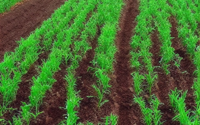Digital Innovations Transforming Urban Farming
Digital Innovations Transforming Urban Farming
Introduction to Urban Farming:
Urban farming is a practice that involves cultivating, processing, and distributing food in or around urban areas. With the increasing global population and a growing awareness of the environmental impact of traditional agriculture, urban farming has gained popularity as a sustainable solution to providing fresh produce locally. Digital innovations have played a significant role in transforming urban farming by making it more efficient, productive, and accessible.
Smart Sensors and IoT in Urban Farming:
One of the key digital innovations transforming urban farming is the use of smart sensors and Internet of Things (IoT) technology. Smart sensors can monitor environmental conditions such as temperature, humidity, light levels, and soil moisture in real-time. This data can be collected and analyzed to optimize growing conditions, improve crop yields, and reduce water and energy consumption. IoT technology enables farmers to remotely control and monitor their urban farms through a smartphone or computer, allowing for precise and efficient management of resources.
Vertical Farming and Hydroponics:
Vertical farming and hydroponics are innovative farming methods that have been made more feasible with digital technology. Vertical farming involves growing crops in vertically stacked layers or on vertically inclined surfaces, maximizing space utilization in urban environments. Hydroponics is a soil-less farming technique where plants are grown in nutrient-rich water solutions. Digital innovations such as automated LED lighting systems, climate control sensors, and nutrient monitoring systems have made vertical farming and hydroponics more efficient and scalable, leading to higher crop yields and year-round production.
Drones and Robotics in Urban Farming:
Drones and robotics are revolutionizing urban farming by automating tasks such as planting, pruning, watering, and harvesting. Drones equipped with high-resolution cameras and sensors can provide valuable data on crop health and growth patterns, allowing farmers to make data-driven decisions. Robotics systems can perform repetitive tasks with precision and efficiency, reducing labor costs and increasing overall productivity on urban farms. These technologies are particularly useful for large-scale urban farming operations where manual labor is impractical or labor-intensive.
Data Analytics and AI in Urban Farming:
Data analytics and artificial intelligence (AI) are being increasingly utilized in urban farming to analyze large datasets and optimize farming practices. By collecting data from sensors, drones, and other sources, AI algorithms can identify trends, predict crop yields, and make recommendations for improving crop quality and resource efficiency. Data analytics can also help urban farmers track inventory, monitor plant health, and automate irrigation schedules based on real-time conditions. These technologies enable urban farmers to make informed decisions and continuously improve their farming practices.
Community Engagement and Education:
Digital innovations in urban farming are not only transforming the way food is grown but also fostering community engagement and education around sustainable agriculture. Mobile apps, social media platforms, and online forums connect urban farmers with consumers, enabling direct sales of fresh produce and transparent supply chains. Educational resources such as online tutorials, webinars, and virtual farm tours help raise awareness about urban farming practices and inspire more people to get involved in growing their own food. By leveraging digital tools, urban farmers can build stronger connections with their local communities and empower individuals to become actively involved in the food production process.


